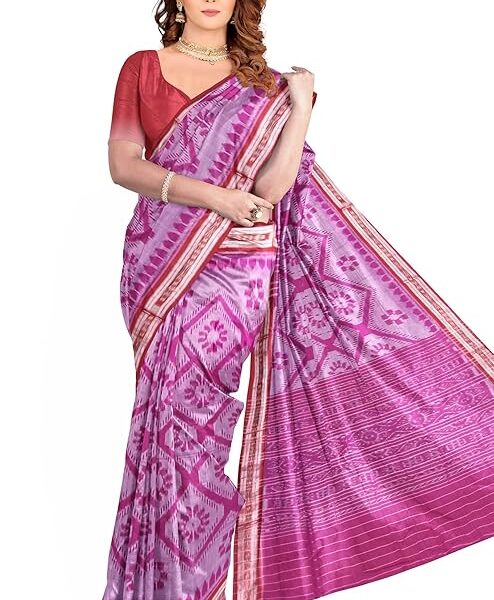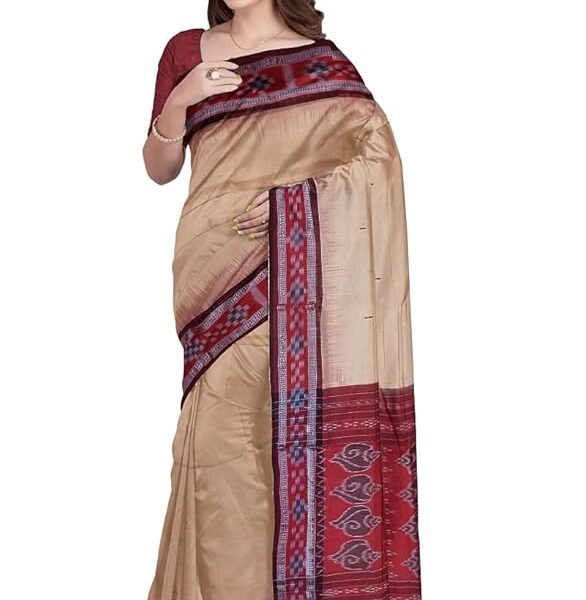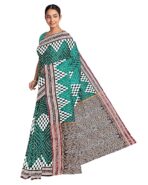-
Pick up from the OdishaHandloomSaree
To pick up today
Free
-
Courier delivery
Our courier will deliver to the specified address
5-7Days
Free






Hurry and get OFF
PREPAID
₹9,999.00 Original price was: ₹9,999.00.₹1.00Current price is: ₹1.00.
94 in stock
94 in stock
To pick up today
Free
Our courier will deliver to the specified address
5-7Days
Free
Payment Methods:
The Odisha Sambalpuri Handloom Ikat Women’s Cotton Saree stands as a testament to the rich textile heritage of India, specifically showcasing the intricate art of Ikat weaving from the culturally rich state of Odisha. Known for its stunning artistry, vibrant colors, and deep-rooted cultural significance, the Sambalpuri saree represents one of the most sophisticated handloom techniques in the world. This saree, made from high-quality cotton, embodies both beauty and tradition, offering wearers a chance to experience the magic of traditional Indian craftsmanship while celebrating the elegance and timeless appeal of handwoven fabric.
The art of weaving in Sambalpur, a region in the western part of Odisha, dates back several centuries. The term “Sambalpuri” is directly linked to this region, where the weaving community has been honing their craft for generations. The Ikat technique employed in these sarees is unique in its process and is said to be one of the oldest and most complex forms of weaving in the world.
Unlike traditional weaving methods, Ikat requires a specific kind of expertise in dyeing and weaving that ensures the patterns emerge only when the cloth is woven. This intricate process, also known as “bandha” in Odia, involves dyeing threads in specific patterns before they are woven into the fabric. The technique used in Odisha is called Double Ikat, where both the warp (vertical threads) and weft (horizontal threads) are dyed in patterns, ensuring that the design is perfectly aligned when the fabric is woven.
This ancient art form, which has been passed down through generations, is still predominantly carried out by handloom weavers. With its increasing recognition globally, the Sambalpuri Ikat has become a symbol of Indian craftsmanship, contributing to the preservation of this dying art form.
The weaving process behind a Sambalpuri Handloom Ikat Saree is as intricate as the design itself. It involves several steps, each demanding high levels of skill and precision. The entire process is done by hand, often over the span of weeks, making each saree a labor of love.
The first step in creating a Sambalpuri saree is the dyeing of the yarns. The threads (both warp and weft) are tied and dyed in specific patterns. The warp threads are the vertical threads that run along the length of the saree, and the weft threads are woven horizontally through the warp. The threads are dyed using natural or synthetic dyes, but traditionally, vegetable dyes are used to retain the authenticity of the craft. The dyeing is done meticulously in multiple stages to create patterns such as floral designs, geometric patterns, or nature-inspired motifs.
The tying and dyeing process is a highly skilled job that requires patience and precision. The threads are tied tightly in parts that will not be dyed to create specific patterns. This technique ensures that when the yarn is woven, the design will appear, creating the beautiful patterns that are characteristic of Ikat weaving.
Once the yarns are dyed, they are carefully arranged on a loom and woven together. The loom used for Sambalpuri sarees is a pit loom, an ancient device that requires the weaver to sit on the ground, allowing them to operate the loom with their feet while weaving the intricate patterns with their hands. The weaver has to ensure that the dyed threads match up precisely in the warp and weft to achieve the desired pattern.
As the weaver works through the fabric, the design gradually appears, bringing together the complex interweaving of colors and threads. The precision required at every step ensures that the patterns remain consistent throughout the saree, from the borders to the pallu. This craftsmanship requires immense skill, experience, and a deep understanding of the weaving process, making the final product truly one of a kind.
A distinctive feature of the Sambalpuri saree is the design of the border and pallu (the loose end of the saree). While the body of the saree features an intricate pattern, the border typically features bold, solid designs. The pallu, on the other hand, is often more elaborate and detailed, showcasing the most complex patterns. The pallu may feature symbols such as peacock motifs, floral vines, or geometrical designs.
The pallu is where the weaver often pours their creativity, and it is what gives the saree its distinctive personality. Traditional motifs such as the Sankha (conch shell), Champa (flower), and Mor (peacock) are commonly featured, with each symbol carrying significant cultural meaning and representing various aspects of life, nature, and spirituality in Odisha.
Only logged in customers who have purchased this product may leave a review.
In stock
No account yet?
Create an Account
Reviews
Clear filtersThere are no reviews yet.